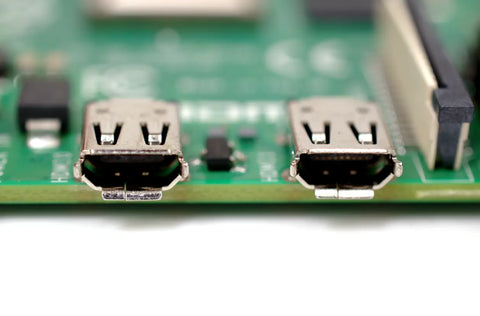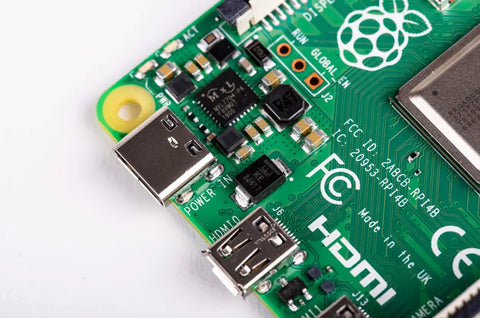The release of the Raspberry Pi 4 Model B marks the start of a new generation o Raspberry Pi boards. As expected the new board has a number of new features that build on the successes of previous boards. We're going to compare the Pi 4 to its predecessor the Pi 3 Model B+ and look at what's changed and what's stayed the same.

A Direct Comparison:
|
Pi 3 Model B+ |
Pi 4 Model B | |
| SOC | Broadcom BCM2837B0 quad-core A53 (ARMv8) 64-bit @ 1.4GHz | Broadcom BCM2711B0 quad-core A72 (ARMv8-A) 64-bit @ 1.5GHz |
| GPU | Broadcom Videocore-IV | Broadcom Videocore-IV |
| RAM | 1GB LPDDR2 SDRAM | 1GB, 2GB, or 4GB LPDDR4 SDRAM |
| Networking | Gigabit Ethernet (via USB channel), 2.4GHz and 5GHz 802.11b/g/n/ac Wi-Fi | Gigabit Ethernet, 2.4 GHz and 5 GHz 802.11b/g/n/ac wireless LAN |
| Bluetooth | Bluetooth 4.2, Bluetooth Low Energy (BLE) | Bluetooth 5.0, Bluetooth Low Energy (BLE) |
| GPIO | 40-pin GPIO header, populated | 40-pin GPIO header, populated |
| Storage | micro-SD | microSD |
| Ports | HDMI, 3.5mm analogue audio-video jack, 4x USB 2.0, Ethernet, Camera Serial Interface (CSI), Display Serial Interface (DSI) | 2 × micro-HDMI, 3.5 mm analogue audio-video jack, 2 × USB 2.0, 2 × USB 3.0, Camera Serial Interface (CSI), Display Serial Interface (DSI) |
| Dimensions | 82mm x 56mm x 19.5mm, 50g | 88 mm × 58 mm × 19.5 mm, 46 g |
Major Upgrades:
The Raspberry Pi 4 is now capable of supporting up to two 4K displays natively thanks to the new micro-HDMI ports which replace the old full-size HDMI connector.

Along with the new micro HDMI ports, the option to select your board's memory size brings a new range of possibilities for the Pi. The Pi 4 is available in 1GB, 2GB and a massive 4GB RAM options. With this newly added power, the Pi 4 is powerful enough to be used a standalone desktop machine for the ordinary person while remaining far quieter, more energy-efficient and most importantly cheaper!
Another big change on the board is the change in the power connector, the Pi 4 now uses a USB-C port instead of the widely popular micro-B connector. This isn't just so the board matches the most common cables currently it's in order to deliver up to half an amp more power to the USB 3.0 ports and CPU when under load.

Some Things Always Stay The Same
It may be a new board with some great new additional but they've kept a number of things the same! Most of these are to ensure full backwards compatibility.
- It's still the same shape and size
- Fully backwards compatible in terms of software
- Projects you create on the Raspberry Pi 4 will work on older models

